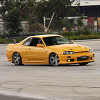R34 Led Reverse Light Conversion
Announcements
-
Similar Content
-
Latest Posts
-
LOL, when one "money pit" is never enough Noice, and excellent work mate
-
I have more than enough digging, laying blocks, moving gravel, airrating, feeding and top soiling the grass, and setting up the veggie gardens growing some seedlings, and then removing all the unused rock to keep me busy for the next few months at least, hopefully the rain stops soon so I can get a few hours in this arvo, but, before that Sunday is washing day, is every body happy, you bet your life we are Nice country road day drives are a day off whenever I'm muscle sore from all the landscaping at the moment, but, more epic multiple day drives will start once the majority of the big jobs outside are completed
-
I thought I'd come back and add something I JUST learned. A Toyota LandCruiser with a 1HZ, mates perfectly with a bottle of Nulon brake fluid. As in, it perfectly screws in. Great make shift funnel when you cut the bottom of it off. This may work for your Corolla. Unfortunately, tipping a 10L drum is much harder than a 4 to 6L bottle, and they no longer include the easy pour tap which was just perfection to use previously.
-
Guys since i bought r33 gts25t coupe 1994 automatic a/t(manual swap 350z gearbox) all i got is problems, always problems. Lets start with that when i turn key into ignition(ON) fuel pump doesnt always works. Sometimes i have to turn key twice Off/on/off/on until it primes. Its new, dw300 - 340lph. My gearbox broke so i did gearbox swap, install different intake manifold, injectors and i take pipes. Car was sitting in garage for more than half a year. I did assembly all not that long ago and when i turn ignition cant hear prime. All of sudden it stopped working. Theres many videos on YouTube how to make relay mod on r33 straight from battery so i did and it doesnt work! 😰 30 - battery positive 87 - positive from fuel pump to relay 85, 86 - one of two wires from original fuel pump wires(light blue, grey) and it didn’t work. so I check on ignition and took original BLUE relays wires from trunk, next to fuses. (I believe it’s IGN+ and ECU pin 18. it didn’t work… tried connecting (IGN+ from og relay) and (ECU 104 from 1of4 FPCM wires) to my new relay 85/86 and it didn’t work. I unplug FPCM. Didn’t work. im thinking what’s wrong fuel pump is working, if I leave IGN+ on 85 and 86 straight to ground it works but it’s just nonstop. Since it getting constant 12v after key in ON. light blue wire gives me 6-8v. so how this should be connected? What causing ECU not giving — on pin? Or I did sth wrong and that’s why it doesn’t work? I need negative signal on ECU that control fuel pump. What this should be?
-








Recommended Posts
Create an account or sign in to comment
You need to be a member in order to leave a comment
Create an account
Sign up for a new account in our community. It's easy!
Register a new accountSign in
Already have an account? Sign in here.
Sign In Now